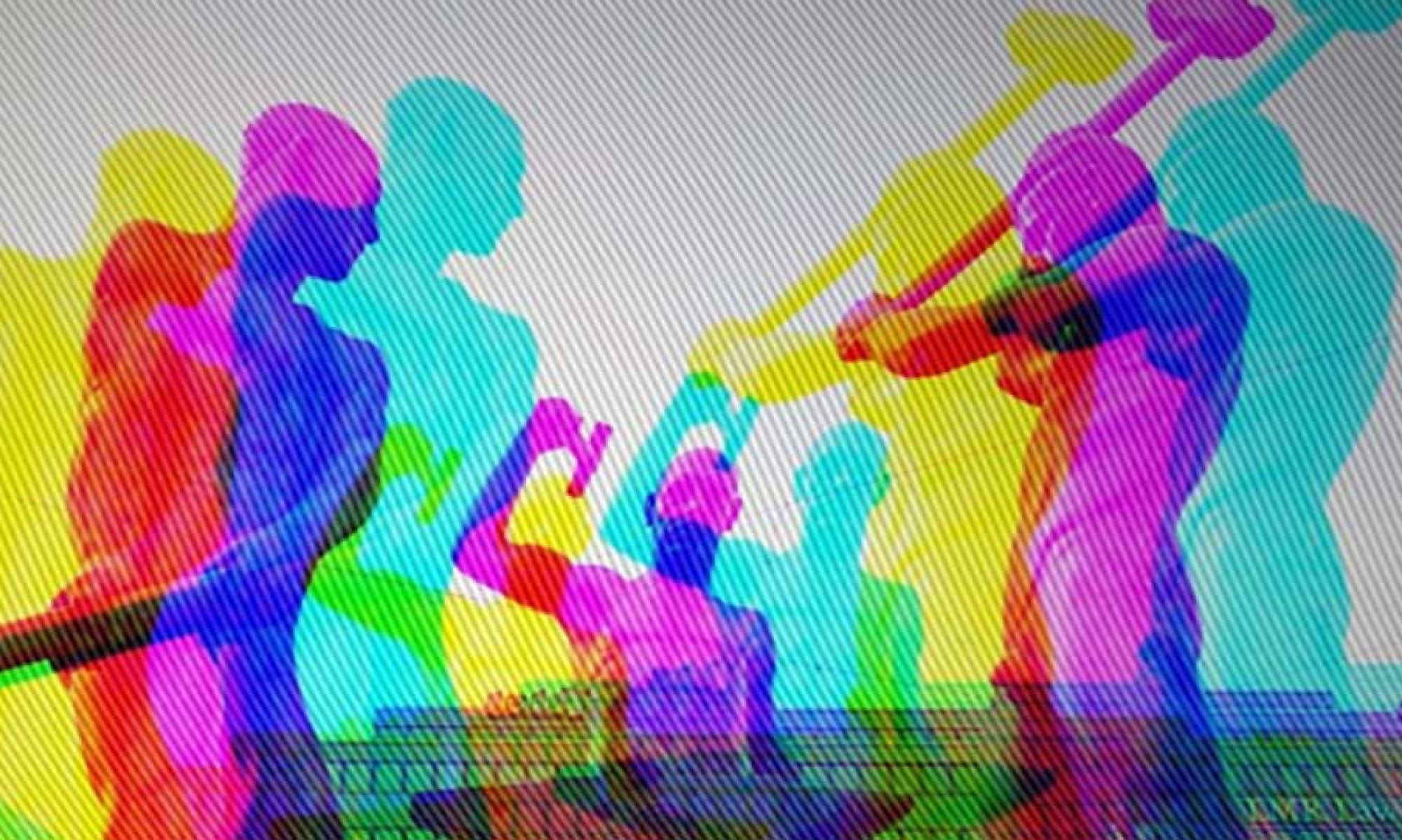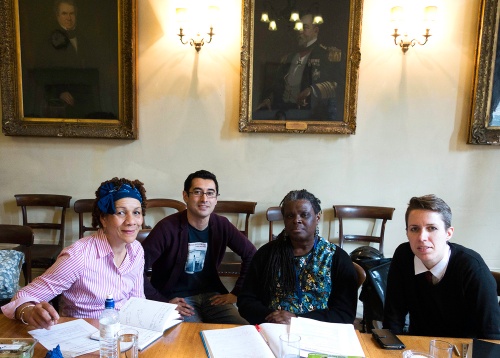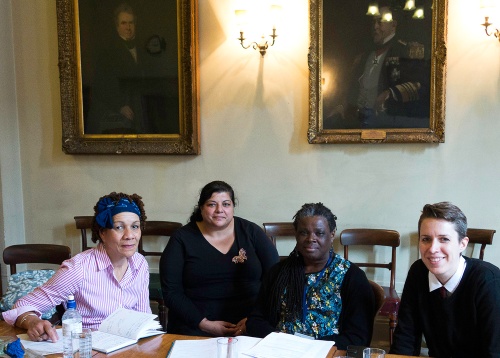Digital Commons
I’ve translated a part of a recent open letter /petition initiated by the Conseil National du Numérique in France and signed by 75 prominent professors and leaders of research and cultural organisations. The petition was published in Le Monde on 10 September 2015. The full text is available on the Conseil’s website: http://www.cnnumerique.fr/communs/ . I think there are some acutely made points here about the threats from the privatisation of knowledge by a parasitic knowledge economy, and the general ‘situation’ of knowledge today in the digital transition. I’m not so sure the rosy picture of open access in other western countries is fulfilled in practice currently (and the more nationalistic tones of the petition are understandable but a little regrettable in their competitive tone), but the potential of open access policy and law is clearly an important subject for today.
Promoting the dissemination of culture and knowledge
The commons will soon make their entrance into French law, on the occasion of the future law on the digital announced by Manuel Valls, after consultation with the Conseil National du Numérique. This is to be welcomed: the commons always feed the exchange and sharing practices that underly scientific production and cultural creation.
Science has always been understood as a common. Historically, the scientific method involves a collective construction of knowledge, organized around verification and validation by peers. The massive influx of digital technology into most fields of human activity is creating new situations. Networks facilitate the emergence of large distributed communities which can mobilize to create and share their knowledge. These common knowledges are all deposits made up of the initiatives, creativity and engagement of individuals in a collective goal. In a broader perspective concerning the safeguarding of a way of shared ownership and the collective management of resources according to a “communal” model, they form part of the natural resources managed by all the members of a community. The digital has reactivated this notion that has brought together the dynamics of the two major transitions that our world is undergoing: the protection of the informational commons as part of the digital transition and the protection of the natural commons as part of the ecological transition.
It is therefore time to give a proper legal basis for preserving the commons, and to adapt the law to right existing practices”¦.
“¦ Public domain information is made up of what cannot and what is no longer framed by Intellectual property laws. At present its protection is not very effective. Indeed it is defined in the hollow of the code of intellectual property, which makes it impossible to fight effectively against abusive IP claims over a work– this is what is meant by the term ‘copyfraud’. Examples are numerous: it is common that the scanning of a public domain work, or even simply photographing it, is used as a justification to claim a copyright on this work! Is it not astonishing – and this is a euphemism – that the Department of the Dordogne could claim a copyright on reproductions of the cave of Lascaux, 17 000 years after the death of its creators? Because it limits the distribution and reuse of works that make up the public domain, the copyfraud constitutes an infringement of the rights of the whole community.
Creating a positive law concerning the public domain is also the way to protect any misappropriation of items that cannot be the subject of an intellectual property right, such as information, facts, ideas, and principles. For instance Amazon has successfully filed a patent for photography against a white background”¦.
[[Note: see this post about the Amazon patent: http://arstechnica.com/tech-policy/2014/05/amazons-latest-patent-is-sillier-than-the-peanut-butter-sandwich-patent/]]
“¦ Open Access, already adopted by our neighbors, particularly in Germany and the UK, enshrines in law the possibility for researchers who wish to publish in open access research articles that have been funded by public money, after a short embargo period. This measure aims to limit the dependence of public research institutions to major scientific publishers. Currently these are subject to a system of double payment, although since 2012 the European Commission has invited member States to enshrine open access in their legislation.
In fact, researchers funded by public money are mostly obliged, for reasons of visibility and career, to publish in prestigious scientific journals. They are therefore in a situation of dependency to scientific journals that now belong to an oligopoly comsisting of a few large publishers (Elsevier, but also Springer, Wiley, Nature). In order to publish in these journals, the authors are forced to give up their copyright. These same researchers also provide their expertise to shape the editorial choices of the journals. In this respect, the increase in subscription prices of journals does not appear to be justified, especially as the transition to digital has significantly decreased publication costs.
Meanwhile, higher education and research institutions annually spend more than € 80 million for access to electronic resources. And access costs have continuously increased. The access prices have also continuously increased by 7% per year for 10 years”¦. This situation severely limits the advancement of research while weighing on public finances.
But open access does not only aim to reduce expenditures of public institutions– open access has a real impact on the advancement of research, and in some cases on the preservation of public health: The team in charge of Liberia’s response to the threat of the Ebola virus were unable to access certain items because of their high costs, impacting on their ability to identify the virus early and develop faster prevention and care measures.
Other measures are needed to build an open digital environment conducive to research, innovation and creation. The provision to enable the automatic search of text data (text and data mining) is to allow for automated search methods in a very large volume of text or data; it is possible through this process to obtain results that would not have been discovered by another method. This would give new impetus to the entrance of French research into the age of big data and to realize very significant productivity gains. Other countries such as the UK, Japan and the United States have outpaced us in this area.
The real enhancement of cultural heritage occurs through its open use by the greatest number. This is also the historical mission of public libraries, which will largely benefit from these provisions. The circulation of open science helps us to face the transitions that confront us. A positive definition of the public domain and its incorporation in law will benefit the influence and standing of science and culture in the digital age. The United States, the United Kingdom and Germany have already understood this. What are we waiting for, before we also benefit from a wider diffusion of this open science and the new audiences and the new reputation it will bring?
List of the 75 signatories on the version published in Le Monde:
ï‚· Pierre LESCURE, Président du Festival de Cannes, Journaliste
ï‚· Bruno CHAUDRET, Directeur de Recherches CNRS, Président du conseil Scientifique du CNRS, Académicien
ï‚· Denis PODALYDES, Acteur, metteur en scène, scénariste et écrivain français, et sociétaire de la Comédie-Française
ï‚· Bruno LATOUR, Directeur scientifique de Sciences Po
ï‚· Benoît THIEULIN, Président du Conseil national du numérique
ï‚· Marc TESSIER, Président de Video Futur Entertainment Group et membre du Conseil national du numérique
ï‚· Alain BENSOUSSAN, Avocat à la Cour d’appel de Paris
ï‚· Michel WIEVIORKA, Sociologue, Président de la FMSH, Directeur d’études à l’EHESS
ï‚· Paul JORION, Anthropologue, essayiste
ï‚· Judith ROCHFELD, Professeur de droit privée à l’Ecole de droit de la Sorbonne, Université Panthéon-Sorbonne (Paris 1)
ï‚· Patrick WEIL, Directeur de recherche au CNRS, Président de Bibliothèques sans Frontières
ï‚· Yann MOULIER BOUTANG, Professeur des Universités en sciences économiques UTC
ï‚· Antoine PETIT, Président et Directeur Général de l’INRIA
ï‚· Nathalie MARTIAL-BRAZ, Professeur de droit Privé, Université Paris Descartes
ï‚· Melanie DULONG DE ROSNAY, Chargée de recherche au CNRS, Responsable du pôle Gouvernance de l’Information et des Communs de l’Institut des Sciences de la Communication du CNRS/Paris-Sorbonne/UPMC, Co-fondatrice de l’association Communia pour le domaine public
ï‚· Valérie PEUGEOT, Présidente de l’association Vecam
ï‚· Bernard STIEGLER, Philosophe, président de l’association Ars Industrialis et Directeur de l’Institut de Recherche et d’Innovation (IRI) du Centre Georges Pompidou
ï‚· Sophie PENE, Professeur à l’Université Paris Descartes
ï‚· Daniel KAPLAN, Délégué général de la Fondation pour l’Internet Nouvelle Génération (la FING)
ï‚· Serge ABITEBOUL, Directeur de recherche à Inria et Professeur affilié à l’ENS Cachan
ï‚· Pierre MUTZENHARDT, Président de l’université de Lorraine et Président de la commission recherche de la Conférence des Présidents d’Université
ï‚· Dominique BOULLIER, professeur de sociologie, médialab Sciences Po
ï‚· Camille DOMANGE, Chargé d’enseignement Sorbonne Paris I.
ï‚· Christine BERTHAUD, directrice du CCSD, CNRS.
ï‚· Claude KIRCHNER, Directeur de recherche Inria, Conseiller du président d’Inria, Président du comité de pilotage du Centre pour la Communication Scientifique Directe
ï‚· Jean-François ABRAMATIC, Informaticien et ancien président du W3C
ï‚· Brigitte VALLEE, Directrice de Recherche émérite au CNRS, rattachée au laboratoire GREYC (Caen Normandie)
ï‚· François TADDEI, Généticien, Directeur du Centre de recherches interdisciplinaires
ï‚· Albertine MEUNIER, Artiste
ï‚· Claire LEMERCIER, directrice de recherche au CNRS en histoire, présidente du conseil scientifique d’Openedition, membre du conseil scientifique du CNRS.
ï‚· Francis ANDRE, Chargé de mission Données de la recherche, Direction de l’information scientifique et technique, CNRS
ï‚· Alexandre MONNIN, philosophe, chercheur chez Inria, membre du réseaux d’experts d’Etalab
ï‚· Colin DE LA HIGUERA, Société informatique de France, directeur adjoint du Laboratoire informatique LINA Ã Nantes
ï‚· Christine OLLENDORFF, Directrice de la Documentation et de la Prospective, Arts et Métiers ParisTech
ï‚· Nicolas CATZARAS, Secrétaire général de la FMSH
ï‚· Maurice RONAI, Membre de la CNIL, Chercheur à l’École des Hautes Études en Sciences Sociales (EHESS)
ï‚· Fabienne ORSI, Economiste, chercheuse à l’Institut de Recherche pour le Développement
ï‚· Pierre GINER, Artiste
ï‚· Christian PHELINE, Membre de la Commission d’accès aux documents administratifs (CADA), ancien directeur du développement des médias
ï‚· Valérie BERTHE, Directrice de recherche CNRS et membre du conseil scientifique du CNRS
ï‚· Jean-Pierre FINANCE, président de COUPERIN et du CA de l’ABES, ancien président de la CPU
ï‚· Virginia CRUZ, designer, directrice adjointe de l’agence IDSL et enseignante à l’Ecole Polytechnique
ï‚· John STEWART, Chercheur en sciences cognitives, Université de Technologie de Compiègne
ï‚· Cécile MEADEL, Professeure de l’Université Panthéon Assas (Paris II)
ï‚· Brigitte PLATEAU, Professeur des Universités, Administratrice Générale de l’Institut Polytechnique de Grenoble
ï‚· Jean-François BALAUDE, Professeur de philosophie, Président de l’Université Paris Ouest Nanterre La Défense
ï‚· Hervé LE CROSNIER, Université de Caen Normandie
ï‚· Anne VERNEUIL, Présidente de l’Association des Bibliothécaires de France
ï‚· Sophie ROUX, Professeur d’histoire et de philosophie des sciences, ENS
ï‚· Serge BAUIN, Université Sorbonne Paris Cité, chargé de mission libre accès aux publications scientifiques au CNRS
ï‚· Margot BEAUCHAMPS, coordinatrice du Groupement d’intérêt scientifique M@rsouin
ï‚· Michel BIDOIT, Directeur de l’Institut des Sciences de l’Information et de leurs Interactions, CNRS

 How We Write
How We Write
